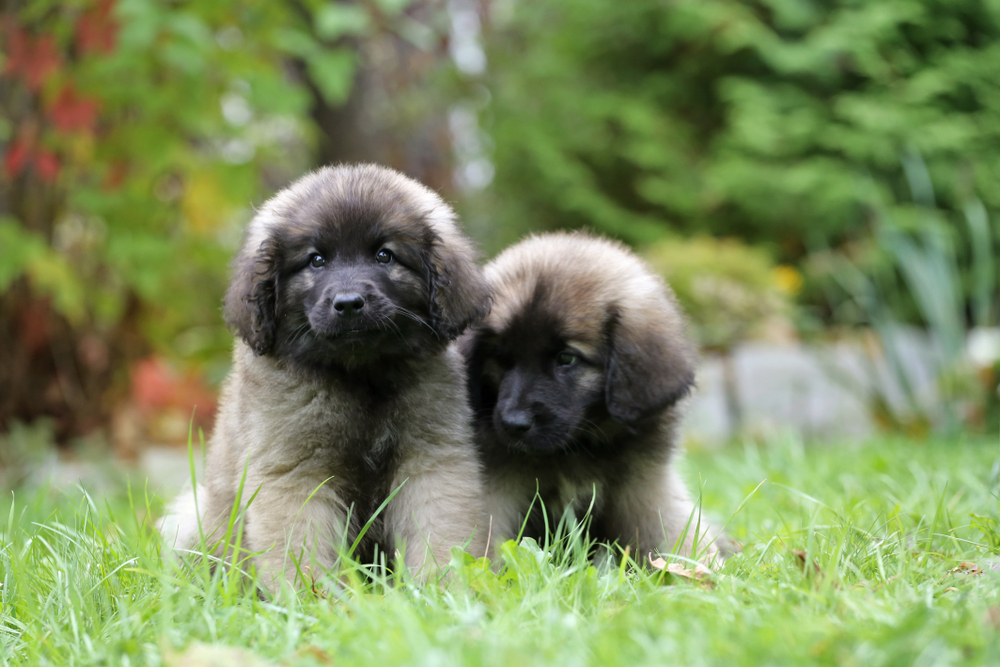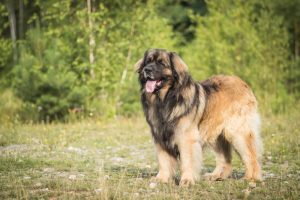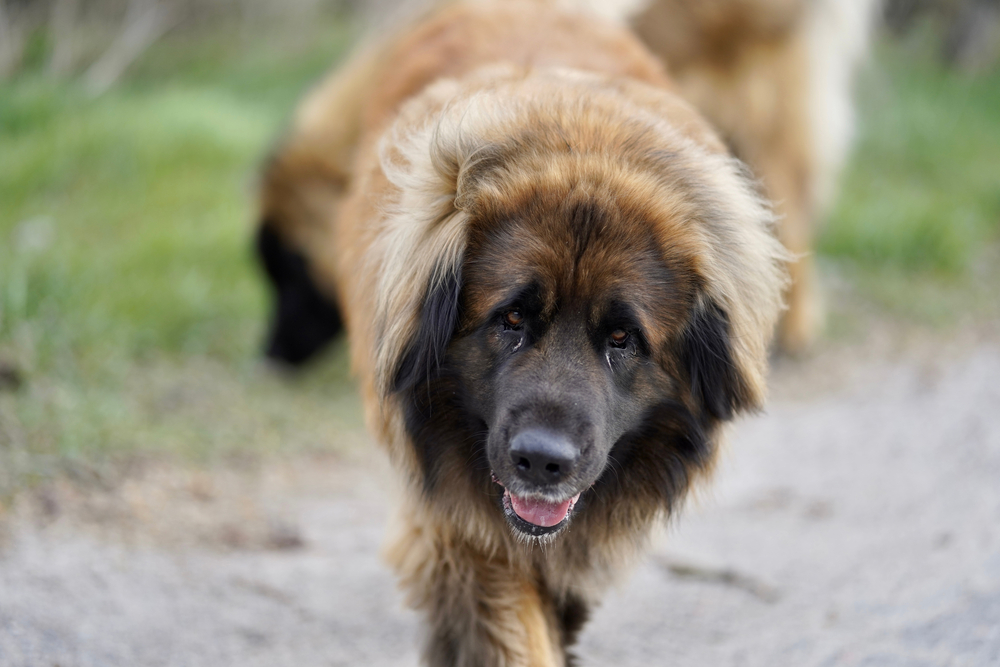
Leonberger- Working

| Name | Leonberger- Working |
|---|---|
| Size | Large |
| Grooming | A lot of Grooming |
| Training | Moderate |
| Exercise | 2 long walks a day |
| Origins | Germany |
The Excellent Lion Looking Working Dog!
Quick Overview
The Leonberger, or Leo as some dog lovers will call this breed, is a massive hardworking dog with a gentle disposition from the city of Germany. There was a time during the first world war however, this breed of dog was believed to be extinct, however it was saved. This dog is known for being very intelligent, noble and very loyal towards its owner! Alongside this, very calm and collective breed of dog too. If the dog is a male, they develop a lion like mane to!

Image Credit: Shutterstock
Name: Leonberger
Size: 25.5 - 31.5 inches
Weight: 90 - 170 lbs
Grooming: Double coat, long, thick, straight
Exercise: 2 long walks a day
Training: Easy to Moderate
Origins: Germany
Lifespan: 7 years
Breed Type: Terrier
History of the Leonberger Breed
The Leonberger dog originates from Germany and was first discovered in the mid 1800s. A man by the name of Heinrich Essig claimed to have bred a Newfoundland and St. Bernard more than once to create this breed of dog. Over the years, it is believed to have been crossed with an early Leonbergers. There is no record of this at this time however. The odd resemblance to the lion is what makes this breed of dog unique to other dog breeds!
In 1891, the first Leonberger club were established by the owner of the breed. For a long time they were considered popular farm dogs and used to pull carts. During the first world war too, they were used to pull ammunition cards. Same use in world war 2. The breed however almost became extinct during the first world war, however a group of enthusiasts managed to save the breed from extinction.
Early 1900s, this breed of dog appeared in the US and Canada. The Canadian government imported them to perform as water recuse dogs to begin with but over time the breed faded away during the great depression. In Europe, the number of Leonbergers increased over time and in 1985, another Leo club was formed in America.
Fun Facts About Your Leonbergers Dog!
Love them or hate them, here are some Five Minutes Spare hard facts that may or may not entertain you:
- During the first world war, they almost became extinct even though they were used during both of the world wars!
- Hard to believe that a dog almost became excited even though they were using them for some hard work, however they managed to get through the world wars.
- Despite having a lion like mane, they are very friendly and intelligent dogs.
- Alongside this, they are very loyal towards there owner.
- Males can grow up to 170lbs
3 fun facts that some people may not of known about this rare type of dog!
Are They Hard to Train?
This breed of dog is very easy to train, not like most dogs who are stubborn. The Leonberger breed have been said to be an highly intelligent dog with strong bonds towards family's. Meaning that even with the right training methods or slightly off ones, this breed of dog should be able to stay calm and respond well to the training provided by his or hers owners!
Do they Need lots of Exercise?
Typically, the Leonberger will need to be let out for at least 2 long walks to keep him or her satisfied, however this could be blocked throughout the day, for example 2 medium walks and one massive walk at night or one massive walk in the morning and 2 medium sized walks at night!
How Often do I Groom my Leonbergers ?
It is said that Leos will need routine grooming as there hair will need brushed a lot. Once or twice a week should do the trick with this breed of dog!
Are they Healthy Dogs?
This type of rare breed is known for being quite healthy but can have some issues surrounding health in the future. Some of the conditions they may be prone to are:
- GVD
- Gastric Dilatation Volvulus, also called bloat, is a life threating situation common to large dog breeds like this one. It occurs when the stomach fills with gas or air and then rotates to trap the contents in the stomach!
- Hip Dysplasia
- Large dog breeds are prone to this. Instable hip joints lead to this!
Got Five Minutes?
If you happen to still have Five Minutes Spare, you can head on over to our webpages. There you will find numerous articles on hobbies and interests, all sorts of other pets, and can even get your daily news by following us on Facebook. We can’t promise to change your life, but we can promise its a wise use of your next Five Minutes.
